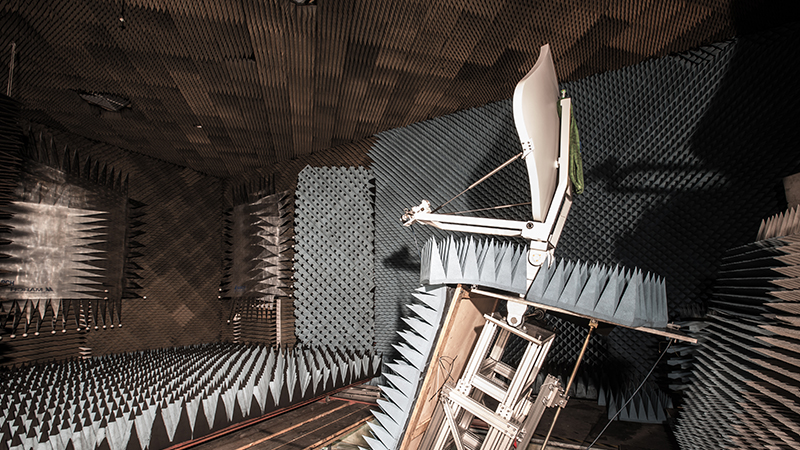Antenna RCS Test Range
Radar Cross Section (RCS) Testing involves assessing the electromagnetic signature of an object to quantify its detectability and susceptibility to radar detection.
Key Features:
- Antenna measurements with near- and far-field RCS measurements
- RF tests with RF transmit power possible
- Closed loop measurements

Near- and Far-Field Measurements with High Frequency Range
The Compact Antenna and RCS Test Range have been designed for antenna, radome and RCS measurements under plane wave conditions. The far field is achieved by two parabolic reflectors, which allow accurate measurements in a test zone (quiet zone) with diameter of 2.4 m and a frequency range from 2 GHz up to 100 GHz. The possibility of direct illumination provides real time measurements for frequencies lower than 2 GHz.
The 14 m x 7 m x 6 m anechoic chamber is fully lined with pyramidal foam and high power absorbers.
High Resolution
A 6-axis control unit with 0.03° accuracy assures high resolution measurements. The antenna is mounted on a rotor to change polarization easily. For RCS measurements a foam-lined tower can be used to minimize undesirable wave propagation effects and to guarantee accurate measurements.
Easy Data Handling
Measurements are performed with the Antenna and Radar Cross-Section Measurement System (ARCS) of March Microwave Systems B.V. and the Analysis, Graphics and ISAR tool provide many options for post-processing. A dual computer system allows acquisition and processing simultaneously in a room next to the anechoic chamber.
Powerful Hardware
To transmit and receive signals a Rhode & Schwarz ZVA 40 is used. Fast sweep time and high measurement speed with less than 3.5 µs per test point enlarge the performance of the system. An attenuator/switch driver handles the polarization of the transmitted signal automatically. Waveguides instead of coaxial cables minimize the loss of antenna-received signals.